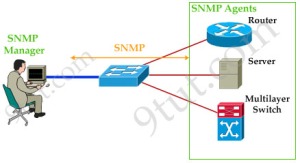Mastering IOS commands are a very crucial part of your CCNA training. By the time you go for your CCNA certification exam, you must be familiar with all the essential commands. You should know how to perform different troubleshooting and configuration using the command line. If you cannot remember the IOS commands, it can be a huge obstacle for your CCNA test and beyond. In this article, we will discuss about three reasons why you require mastering IOS commands:
Simulation questions in CCNA test – Cisco has initiated simulation questions in the CCNA exam. They examine the ability of the CCNA candidate to accomplish the troubleshooting and configuration works at the command line. This normally engages the configuration of a straightforward network or resolving something which’s out of the order within the network. Because of the complication of the simulation questions when evaluated with other types of questions, it’s usually understood that these questions carry a higher value while calculating the final mark. However, this hasn’t been authenticated by Cisco. Due to this, you must be very familiar with IOS commands so you can handle and resolve these kinds of simulation queries effortlessly and have a good chance of qualifying the CCNA exam.
Business needs – a lot of employers are seeking a network administrator with good problem detection and solving abilities. Cisco has the biggest market share regarding network tool in the enterprise division, and their market domination looks set to carry on. Largely because of this reason, most of the network troubleshooting nowadays in the business settings revolve around being able to type-in the appropriate “show” IOS commands and seek possible problems. If it’s a configuration problem, you are required to understand the appropriate configuration IOS commands also.
Other Cisco credentials - For certified rank Cisco credentials, for example the CCNP, you require to be familiar with IOS commands at a base level. If you already have great base when doing your CCNA, learning regarding how to configure Cisco network tool at a higher level becomes simpler.
MIMIC IOS Simulator ships with many ready-to-go simulations for Cisco devices such as the 3640, 7206, 6260, 6500, GSR 12000. Moreover, MIMIC IOS Simulator supports many IOS commands and numerous Cisco applications: CEMF, Cisco Prime, CiscoWorks, CiscoWorks 2000, CiscoView and other network management applications. Users can simulate up to 100,000 devices in a single workstation by using MIMIC IOS simulator.









